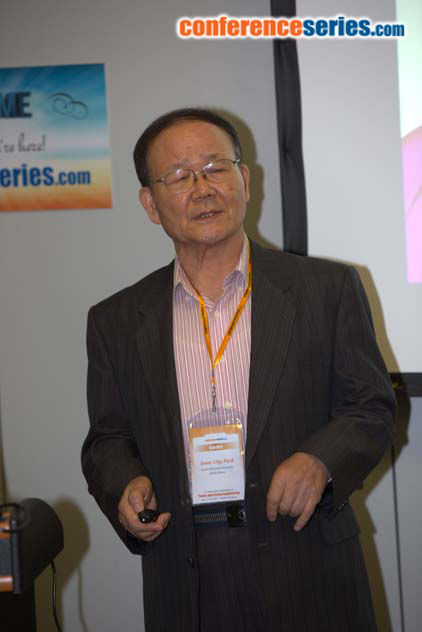
Soon-Ung Park
Seoul National University, South Korea
Title: Emergency preparedness for the release of radionuclide from a hypothetical accident of a nuclear power plant in Korea
Biography
Biography: Soon-Ung Park
Abstract
The Lagrangian Particle Dispersion Model (LPDM) with the UM-LDAPS meteorological model in the horizontal grid scale of 1.5 × 1.5 km2 centered the power plant site has been employed to archive radionuclide (137Cs) dispersion database for the emergency responses at the early stage of the hypothetical accidental releases of radionuclide from the Uljin Nuclear Power Plant in Korea. The database includes 72 synoptic time-scale cases in a year. Each case has the spatial distributions of the hourly mean surface concentration, column integrated concentration and the hourly total deposition (wet+dry) of radionuclide in the model domain simulated by LPDM by releasing a Lagrangian particle per minute for 5 consecutive days at the site. The worst synoptic time-scale case (the highest surface concentration occurring case in the model domain) among 72 cases is chosen to be performed the LPDM model with the time dependent emission rate of the Fukushima nuclear power plant accident for the first 5 days for the provision of the required information for emergency responses including the affected areas, the moment of arrival of potential plume at critical locations, health effect, protective action guides at the early stage of the accident to assist emergency response managers in taking action to protect the public and environment. It is found that the presently archived database is very useful for the emergency response managers to take protective actions where and when concentrations of radioactivity are projected to be high and to establish the evacuation plans and emergency planning zones at the early stage of the accident by choosing a proper synoptic time-scale case from the archived database.
Recent Publications
1.Hirao, S., Yamazawa, H., Nagae, T. (2013). Estimation of release rate of iodine-131 and cesium-137 from the Fukushima Daiichi nuclear power plant: Fukushima NPP Accident Related. Journal of Nuclear Science and Technology, 50(2): 139-147.
2.Park S-U (2015) Spatial distributions of aerosol loadings and depositions in East Asia during the year 2010, Atmospheric Environment 107:244-154.
3.Park, S.-U., Choe, A., Park, M.-S., (2013) Atmospheric dispersion and deposition of radionuclides (137Cs and 131I) released from the Fukushima Dai-ichi nuclear power plant. Computational Water, Energy, and Environmental Engineering. 2:61-68.
4.Park S-U, Lee I-H, Ju J-W, Ju S-J (2016) Estimation of radionuclide (137Cs) emission rates from a nuclear power plant accident using the Lagrangian Particle Dispersion Model (LPDM). J. Environmental Radioactivity 162-163: 258-262.
5.Stohl, A., Seibert, P., Wotawa, G., (2012) The total release of xenon-133 from the Fukushima Dai-ichi nuclear power plant accident. J. environ. Radioact. 112: 155-159.


